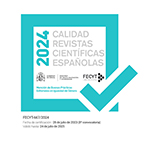Los niños en la antigua ciudad de Teotihuacán (150 a.C. – 650 d.C.): un primer acercamiento
Resumen
Los niños como actores sociales activos en cualquier grupo social representan no sólo la transición generacional, sino la reproducción de la cultura de la cual forman parte. En términos arqueológicos, estos actores también son participes de la formación del registro, y aunque desde lo teórico-metodológico las propuestas siguen en construcción, existen vías que nos dan la posibilidad de tener ciertas aproximaciones a la hora de “visibilizarlos”, como es el caso de los restos óseos y sus respectivos elementos asociados en lo que se considera como ofrendas, así como en las fuentes históricas, en donde dicha información ha servido como guía en esta tarea.
Para el caso específico de Teotihuacán también existen dificultades a la hora de evidenciar el registro arqueológico relacionado con los niños, ya que a pesar de la inmensa cantidad de trabajos que se han desarrollado sobre la urbe a lo largo de más de un siglo, los niños no han sido un tema que haya generado gran preocupación. Por ello, lo que aquí se pretende hacer es un primer acercamiento general a esta temática, partiendo de la revisión de la información existente a través de libros, informes de excavaciones, artículos y otras fuentes, para con ello poder saber más sobre ese sector poblacional en una de las ciudades prehispánicas de mayor relevancia en México, tanto del pasado como en la actualidad.
Descargas
Descarga artículo
Licencia
La revista Sociedad e Infancias, para fomentar el intercambio global del conocimiento, facilita el acceso sin restricciones a sus contenidos desde el momento de su publicación en la presente edición electrónica, y por eso es una revista de acceso abierto. Los originales publicados en esta revista son propiedad de la Universidad Complutense de Madrid y es obligatorio citar su procedencia en cualquier reproducción total o parcial. Todos los contenidos se distribuyen bajo una licencia de uso y distribución Creative Commons Reconocimiento 4.0 (CC BY 4.0). Esta circunstancia ha de hacerse constar expresamente de esta forma cuando sea necesario. Puede consultar la versión informativa y el texto legal de la licencia.










